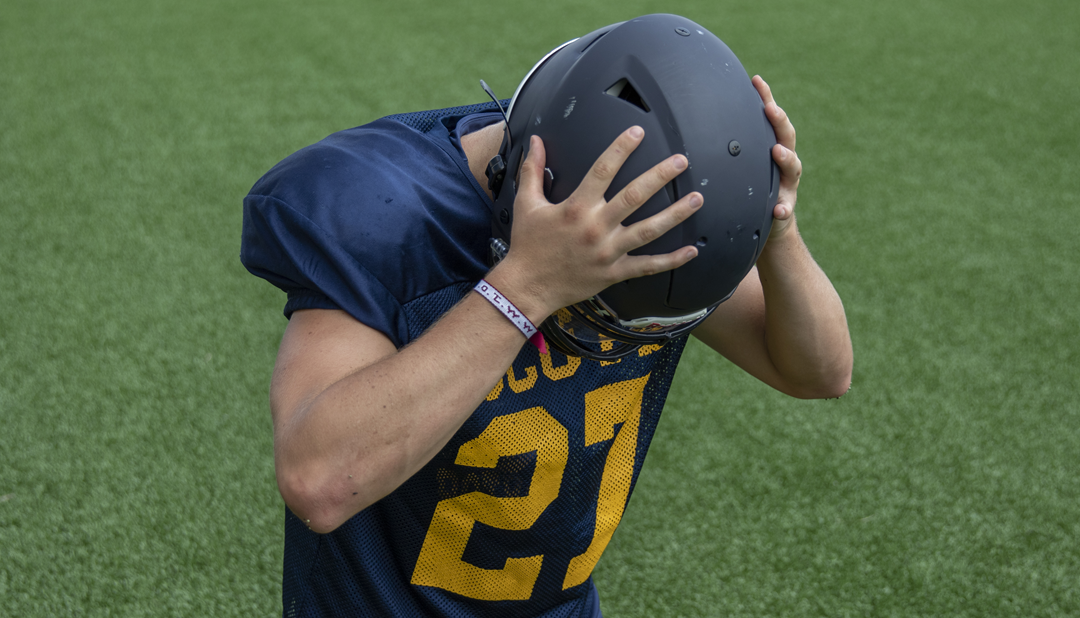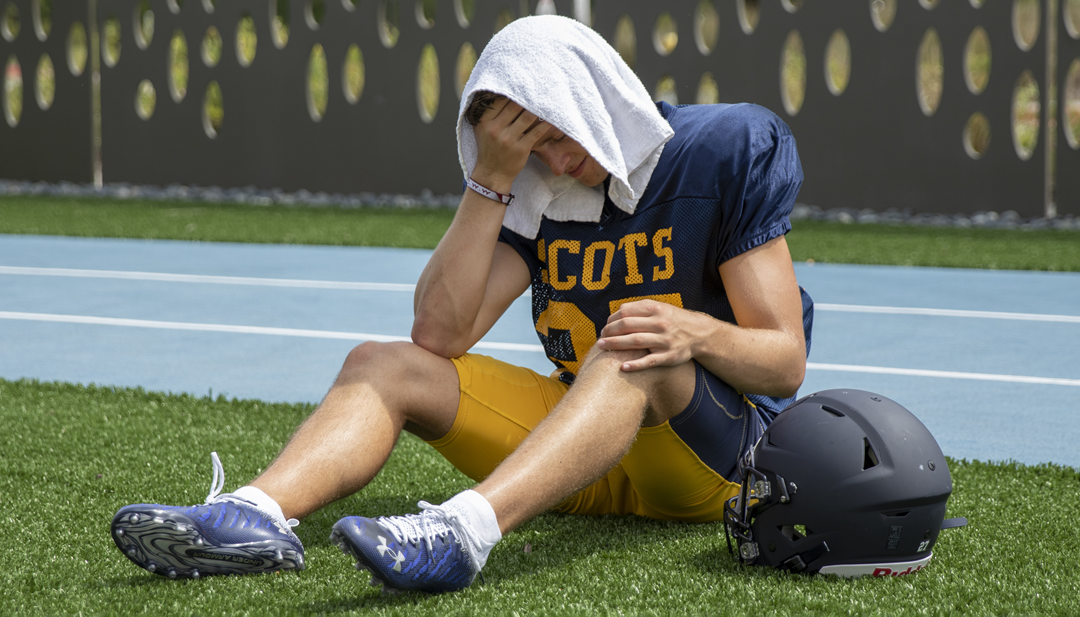
Getting Back to Action: The 6 Stages of Concussion Recovery
If your child sustained a concussion in a recent game or practice, recovery won’t happen overnight. There are six stages of concussion recovery necessary before returning to action.
A young athlete might think of a concussion as simply a sports injury, but because it involves the brain, a concussion is more complex. A concussion is a traumatic brain injury that occurs after a blow to the head or a hit to the body causes the brain to move back and forth within the skull.
While a concussion can occur during any type of activity or simply when you bump your head on a bathroom cabinet, it’s more likely to happen when playing sports, such as football and soccer. These contact sports pose a high risk of physical injury, which, unfortunately, can involve your child’s head.
Recovering After a Concussion
After a concussion, your child may want to get back to the court or field quickly, but it’s essential to be patient throughout the full recovery process. Prioritize rest and quality sleep during this time since both will help your child’s brain while they recover.
As your young athlete begins feeling better and symptoms, such as headache and sensitivity to lights or sounds, disappear, a medical provider may recommend a gradual return to normal activities. Encourage your child to listen to his or her body and resume activities as able but not to overdo it.
If your child’s concussion symptoms linger or get worse, it’s important to talk with a medical provider. Physical and mental symptoms that don’t go away can be a sign of post-concussion syndrome, which can last for weeks or even months.
When will your child be ready to get back in the sports action? Full recovery isn’t always obvious, and working with your child’s doctor, coach and an athletic trainer, if one is available, is crucial to ensuring your child returns to sports safely.
Generally, concussion recovery follows these six stages.
Stage 1: Back to Regular Activities
In the initial days after a concussion, your child should not return to sports. Normal activities, such as work or school, may be OK, if your child’s medical provider says so. Your child may only tolerate a few hours of school, so keep an eye out for symptoms.
Stage 2: Light Aerobic Activity
After a few days without symptoms, your child may receive clearance to participate in brief bursts of gentle physical activity to increase his or her heart rate, such as short walks. Avoid weight-lifting at this stage.
Stage 3: Moderate Activity
The next step for recovering from a concussion is progressing to moderate activities that increase your child’s heart rate and involve body and head movement. Activities may include jogging or slow running, along with moderate-intensity weight training.
Stage 4: Heavy, Noncontact Activity
At this point of your child’s concussion recovery, your child’s provider may say it’s acceptable to participate in activities, such as sprinting, weightlifting or noncontact, sport-specific workouts.
Stage 5: Practice and Full Contact
If your child has progressed through the first four stages without a return of symptoms, his or her provider may give the all clear to participate in contact activities in a practice setting.
Stage 6: Competition
Once your child has participated in sports practices without a return of symptoms, he or she may be approved to return to actual competition. Be careful, though. Having one concussion makes your young athlete more susceptible to future concussions, so talk with the team’s coach or athletic trainer or your child’s provider about precautions your child should take to prevent another head injury.
The Bottom Line on Concussion Recovery
Returning to sports isn’t as simple after a concussion as after a sprained ankle, for example. Head injuries need to fully heal before your child returns to activities, and you should work closely with a health care provider to determine when to move through each recovery phase.
As your child recovers after a concussion, carefully follow the treatment plan outlined by your medical provider. If your child progresses and then his or her symptoms return or new ones develop, hit the pause button and seek medical attention.
After a concussion — and even if your child has never had one — take precautions to protect your athlete’s head and avoid future concussions. Be sure your child uses the required sport-specific protective gear, including a well-fitting helmet. If your child damages his or her helmet during a game or practice, replace it. A helmet that’s cracked or broken can be ineffective.
Baseline testing before your child’s sports season can be another helpful step to discuss with your child’s pediatrician or coach. This type of evaluation provides valuable information that can be used to determine the extent of a head injury if one occurs.
It’s also a good idea to familiarize yourself with the signs of concussion and to talk through them with your child. A medical provider should promptly check out any symptoms after a hit to the head.
Is your young athlete recovering after a concussion? Call 469-515-7100 to discuss your child’s care.

